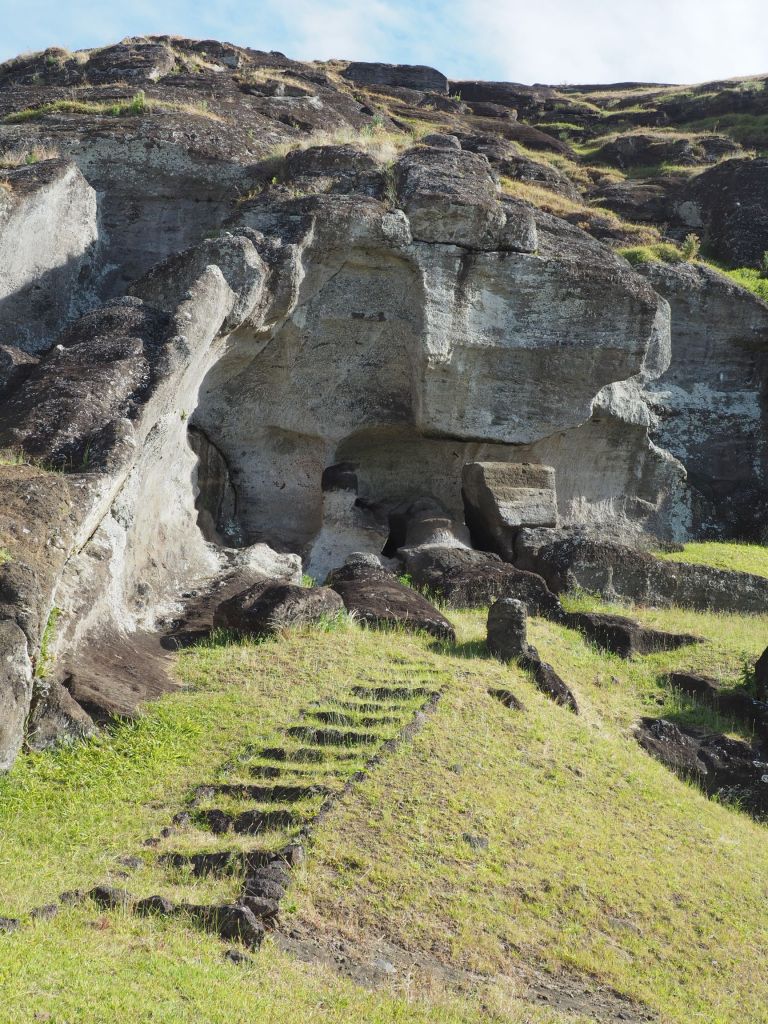Rapa Nui, or Easter island, is an island in the middle of the Pacific Ocean. It’s over 3500 km from Santiago de Chile, the only city from which you can fly there at the moment. Rapa Nui is part of the Polynesian triangle including New Zealand and Hawaii and shares many cultural aspects with the other islands. The about 10.000 people living on the island are focused on tourism and sharing some of that culture. However, a lot of details remain a mystery and much of the information out there comes from stories passed on through the generations. At some point there were only 111 original people left on the island. Now, it’s a mix of Rapa Nui, Chileans and people from other Polynesian islands.

The first people to inhabit the island were actually from another island, in search of inhabitable land. They decided to settle in Rapa Nui and slowly the island’s population grew to include multiple clans. These are the people who built the famous heads of Easter Island. These heads are the Moai and actually consist of full bodies, mostly missing the feet. They were built in honor of forefathers. When people had died, a platform was built on their grave. Then, sculptures were made to represent the deceased, even resembling the actual people.



The sculptures were made in a quarry called Rano Raraku. The first ones were small, but like with most human things, they got bigger and bigger. A moai of over 20m still lies in the quarry, but was never raised. From the quarry the sculptures were transported to the platforms by the ocean. They’re not sure how it was done, but one theory speaks of the walking moai. It’s plausible. My guide explained it’s like moving a heavy fridge or washing machine. You slide one edge. Then the other. It’s like the thing is shuffling or walking. Yet many sculptures broke on their journey. The quarry is full of moai that never reached their destination.









The moai that did reach the platforms were raised with their backs to the water, looking out for the inhabitants of the island. They received eyes made of coral and pupils of obsidian. Once the eyes were there, the people believed the spirits of the ancestors were in the statues, protecting them from harm. If clans were fighting, they might destroy the eyes of the moai to take away the protection of the opposing clan. The only Moai facing the sea are at Ahu a Kivi, looking out towards the homeland of the first settlers.



Many of the moai are no longer there or unrecognizable after years of erosion of the volcanic stone. Those we can see on the platforms have often been restored. For example, at Tongariki, popular to watch the sunrise, are 15 moai that had to be restored after being spread out through the landscape by a tsunami. You can see the cement that glued their heads back on. The eyes of the moai were long lost or destroyed, but some still have their hair. It was carved from a different type of stone, usually red. The moai are also being coated with a special layer of protection.











It’s very impressive to see the different sites of moai and learn about the people who created them. The main sites are only accessible with an official guide. However, there are some platforms you can visit on your own in the town and they are popular spots to watch the sunset. But I thought my time with the guide was very valuable and he happily took pictures of us too. Bonus!

